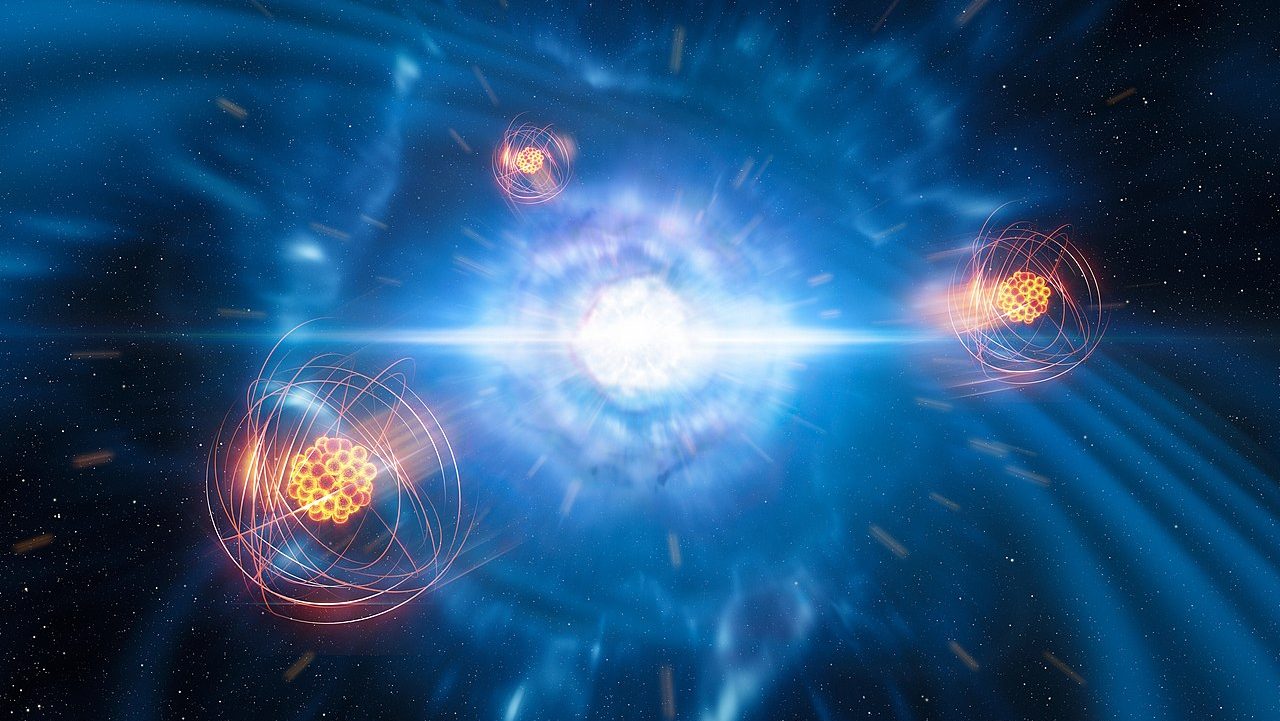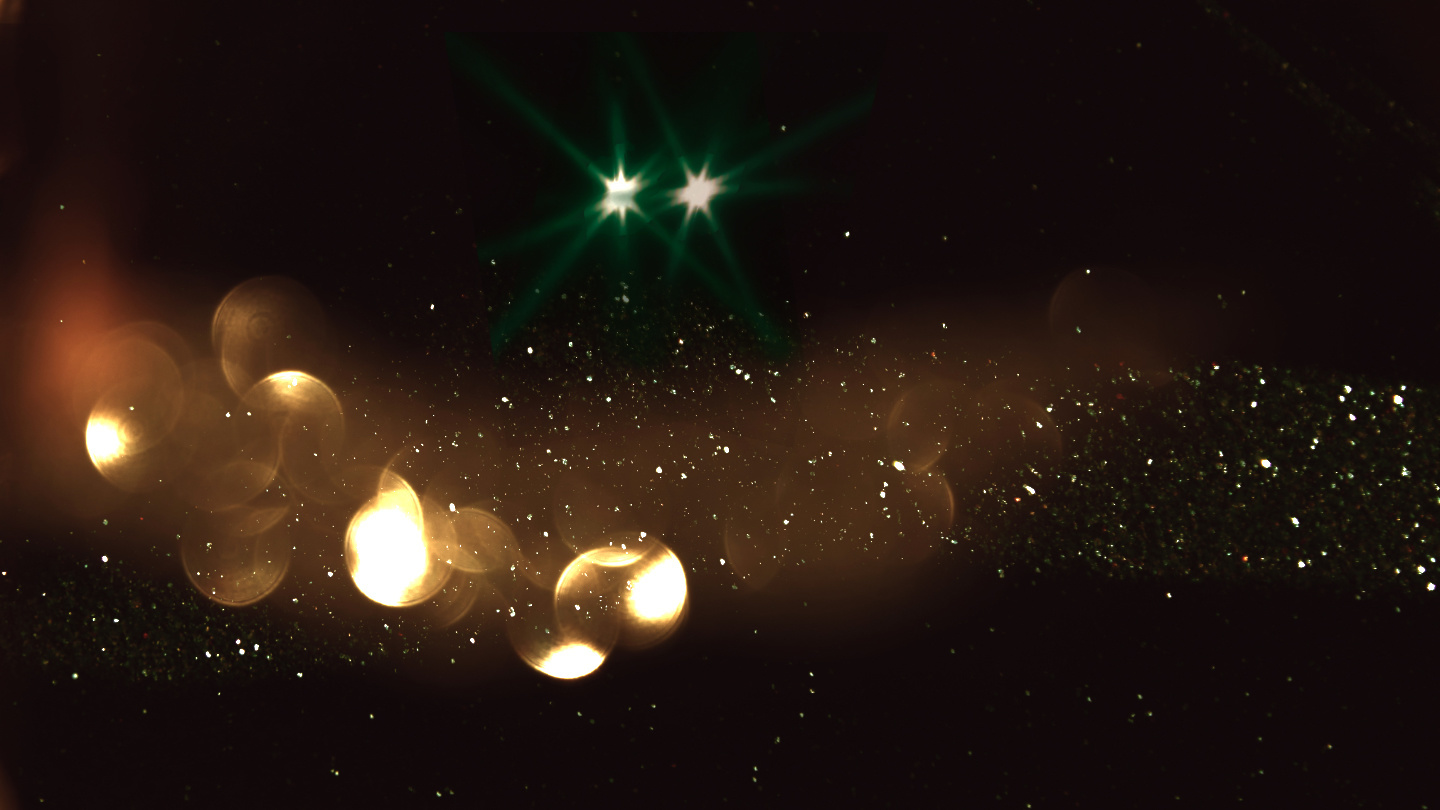Did you know you have gold in your brain? Inside every neuron, there are just a few atoms of gold that keep the neuron charged, which is what keeps you thinking, moving, and frankly existing. What could be cooler than that? Well, NASA’s assistant director of science communication Michelle Thaller adds a layer of astronomy on top of that amazing neuroscience. It turns out that when we look far into outer space, essentially back through time, we can see that all the gold in the known universe was created and spewed out in cosmically violent neutron star collisions—that includes the atoms of gold that are now inside your brain. Crazy, right? That’s what Carl Sagan meant when he wrote that “we are made of star-stuff.”
Michelle Thaller: To me it’s amazing some of the things that we actually do know. There’s plenty of things that are conjecture or theories but there’s a lot of stuff that we have real observations and real knowledge of. And amazingly, to me, one of the things is: where did all the atoms in our body come from? And it is actually a real fact, not a theory, that when you look back at how the universe looked about, say, 13 billion years ago, the chemistry was very, very different. We can actually see so far away out into space that the light we’re looking at took billions and billions of years to get to us even at the speed of light. And the farthest away we can see is to a time that was about 400,000 years after the Big Bang. That’s pretty impressive. That’s about 13.5 billion years ago. And when you look back that far the only thing you see is very hot hydrogen gas, a little bit of helium, a tiny bit of lithium, but that’s it. That’s not a theory. That’s actually an observation. And as you look at galaxies very far away in space and therefore very far back in time, you can actually watch the chemistry change. You watch different atoms get built up. And the only thing in the universe that we know that can make a large atom—by large I mean something like oxygen or carbon or calcium or anything that makes up our bodies—is actually the very core of a star. That’s where nuclear fusion reactions ram hydrogen together. The hydrogen was formed during the Big Bang. You take these hydrogen atoms, you smash them together and you build larger and large atoms until you build something like the carbon that makes up most of my body.
And so we’ve known for a while that the only way you get these large atoms is stars. But even with something as powerful as the core of a star there were some atoms that were a little bit more slippery; we couldn’t quite figure out how you get the energy needed to make something really big like a gold atom. That should take even higher temperatures, even more energy than what you typically find in the core of a massive star. So what is even more violent than an exploding mass of star, which makes a lot of heavy elements of the universe? One of the things we discovered recently is that two dead cores of stars called neutron stars can actually spiral together and collide. And when they collide instead of a normal death of an exploding star you basically have something like that on steroids. You have an explosion that’s so big and so violent people have really seen nothing like it since the Big Bang. Sometimes they call this a hyper nova, sometimes they call it gamma ray burst because of the burst of high energy radiation that comes out. But wonderfully we’ve been observing more and more of these colliding neutron stars and they are just pumping out gold atoms, platinum atoms and, interestingly enough, bismuth—but these very, very large, difficult-to-form atoms. And there’s so much gold created in one of these explosions that if you just look at the rate, you know, how many of these explosions do we observe—amazingly we observe about one a day—and how much gold is created in one of those? And you can actually account for the entire abundance of gold in the universe just from that one thing, those colliding neutron stars.
So the gold you have, I mean yes, you have gold in your jewelry. That’s really cool. I’ve got a gold ring. But interestingly enough our neurons don’t work without a tiny, little bit of gold to help our brain actually charge the neurons in our brain. We need a little bit of gold and a little bit of copper. So your brain wouldn’t work without a little bit of gold, a couple of gold atoms in the neurons. So the reason we’re here thinking and moving and actually existing the way we do is intimately connected to these colliding dead stars, these colliding neutron stars that most likely created all of the gold in this room.






